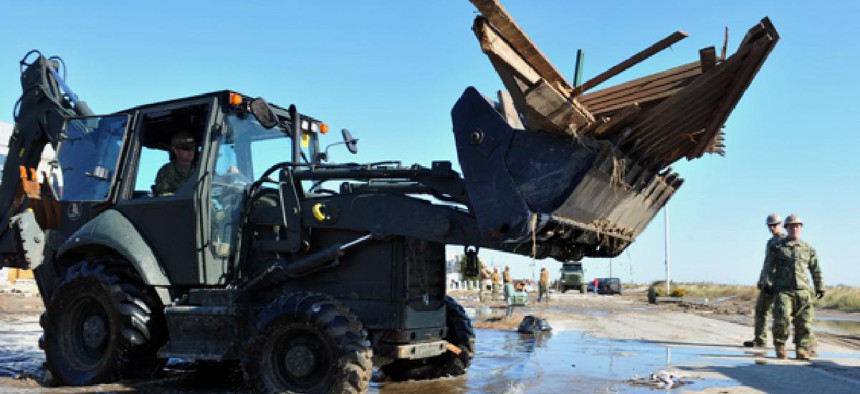Leverage nonprofits’ experience for Sandy recovery efforts

Photo: FashionStock.com / Shutterstock.com
Walking through Manhattan, it’s easy to forget that just four years ago, our city faced the wrath of Hurricane Sandy. Even while driving down the streets of coastal Brooklyn, Queens and Staten Island, the memories of that massive destruction may seem far away. But walking inside homes in the far reaches of the outer boroughs tells an entirely different story.
Too many New Yorkers, particularly those in low-income communities, are still living in unsafe conditions four years after the storm.
This weekend was the fourth anniversary of Hurricane Sandy, and our organization, Rebuilding Together NYC (RT NYC), marked the occasion by bringing together more than 100 volunteers in Gerritsen Beach, Brooklyn to repair five homes and two community spaces still suffering from Sandy damage. We plastered walls, fixed roofs and repaired leaking foundations, ceilings, and floors for families who cannot afford to pay. And we also installed 50 solar-powered lights in the community to increase public safety.
Yes, the city has stepped in to help a portion of the homeowners affected by the storm. But the city program that has been administering funds and hiring contractors for renovations – Build It Back – has left many New Yorkers behind. According to reports, Build it Back has served less than a third of the 20,000 homeowners who originally applied for the program. More than half have dropped out or have been deemed ineligible and the city now expects to serve 8,500 of the 8,585 applicants still sticking with the program.
The city is missing out on an incredible opportunity to leverage the expertise of the nonprofit sector. While many of the massive construction firms that were hired to repair some of the 8,500 homes throughout the city are unaccustomed to smaller projects, nonprofits are nimble enough to get the job done on schedule and at a fraction of the cost.
Nonprofits have been providing direct services to the Sandy-affected homeowners with the biggest needs over the past several years, but many receive no city funding for their work. Community-based organizations are intimately familiar with the challenges faced by these families and they are well positioned to partner with the city to help fill the gaps.
Our mission has always been to transform the lives of low-income New Yorkers by improving the health and safety of their homes and revitalizing our communities. We find that taking a holistic approach to revitalizing communities produces the best results. That means fixing not just homes, but community centers as well. And it means listening to the community members to provide the improvements that matter to them – often in the form of street lights that make neighborhoods safer. Finally, it means utilizing the talents of the local workforce and helping them find jobs, which strengthens entire communities.
At RT NYC, a lot of our labor comes from volunteers and workforce trainees looking to get experience on their way to careers in construction. This approach keeps costs down and provides a jumpstart for many prospective construction workers in the communities hit hardest by the storm. In fact, half of the people who have gone through our training program have gone on to secure jobs in the construction trades.
We have always said that recovering from Sandy would be a long process that would require a lot of hard work. And we commend Mayor de Blasio for his administration’s focus on helping homeowners get back in their homes. But each time we take on a new project, we remember that there is still a long way to go. It’s far too easy for New Yorkers to slip through the cracks because they lack the resources to get the repair services they need.
As our city grapples with difficult issues like storm recovery and housing affordability, we must remember the nonprofits that are on the ground, hand-in-hand with communities, because they can play a larger role in getting people back on their feet.
Kimberly George is the executive director of Rebuilding Together NYC, a nonprofit organization dedicated to the preservation of affordable housing for low-income residents of New York City.